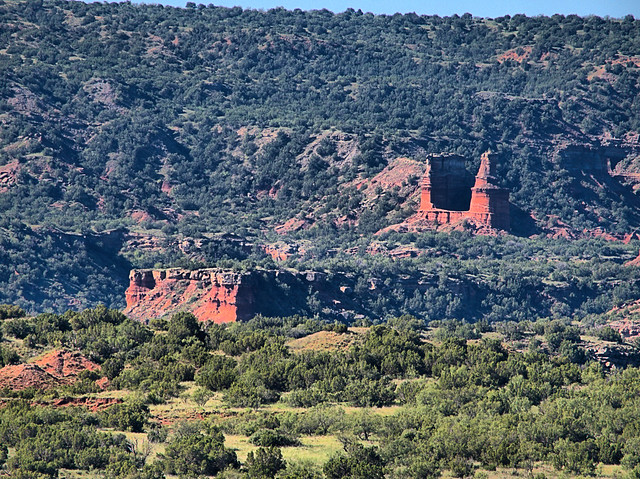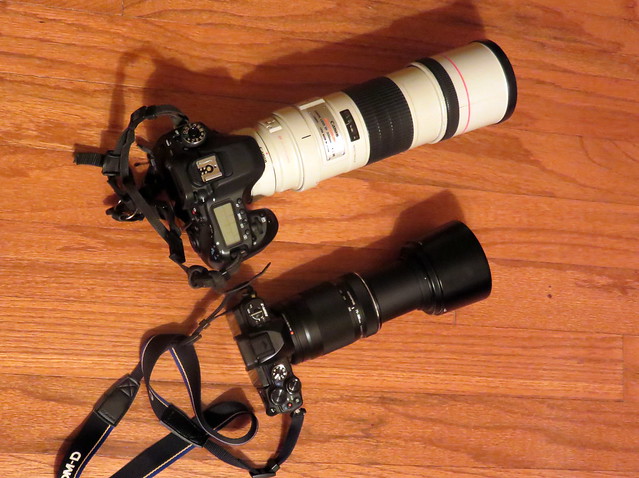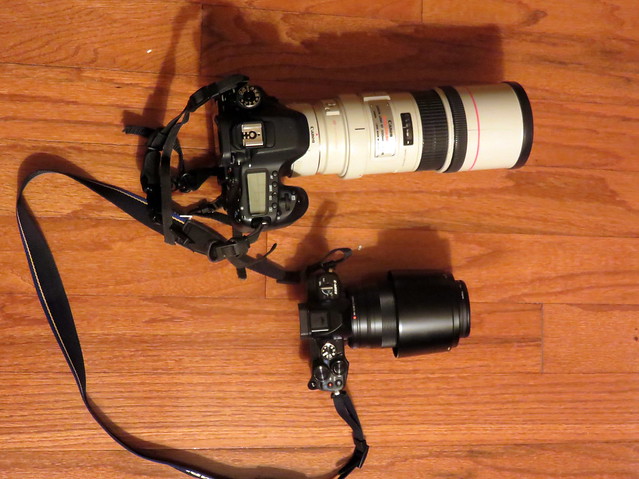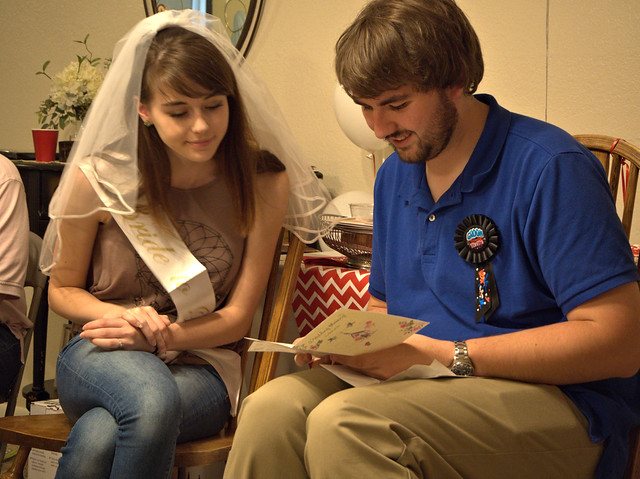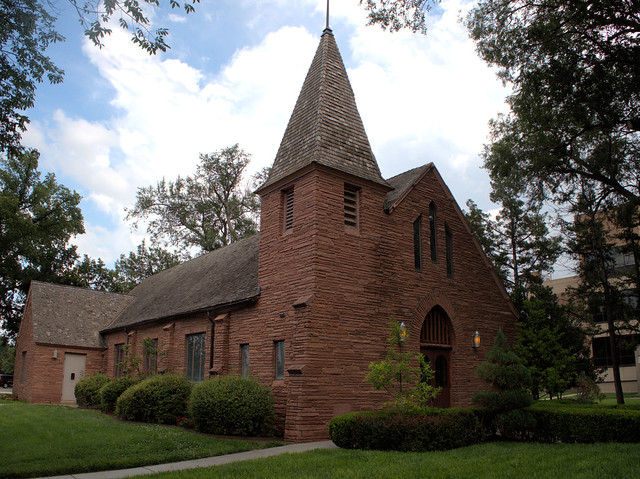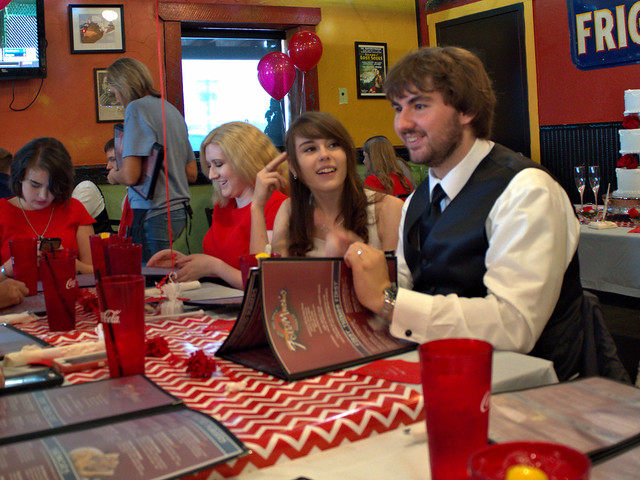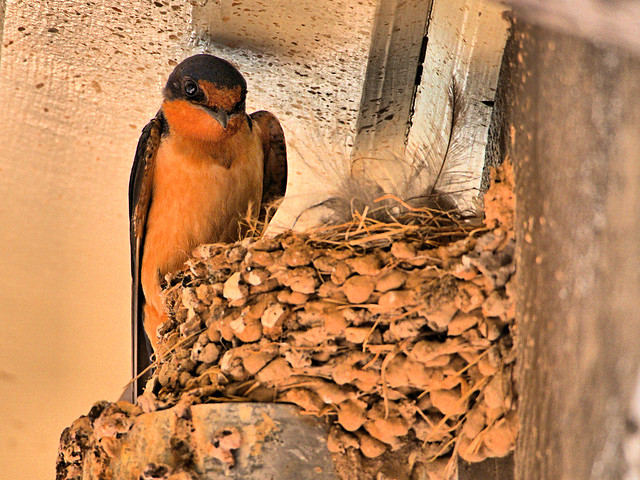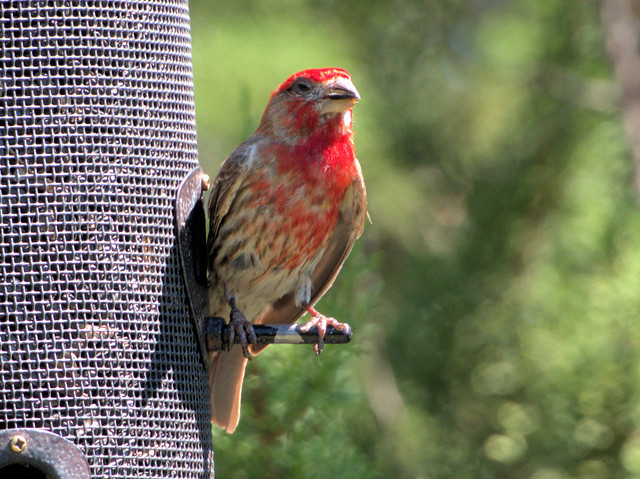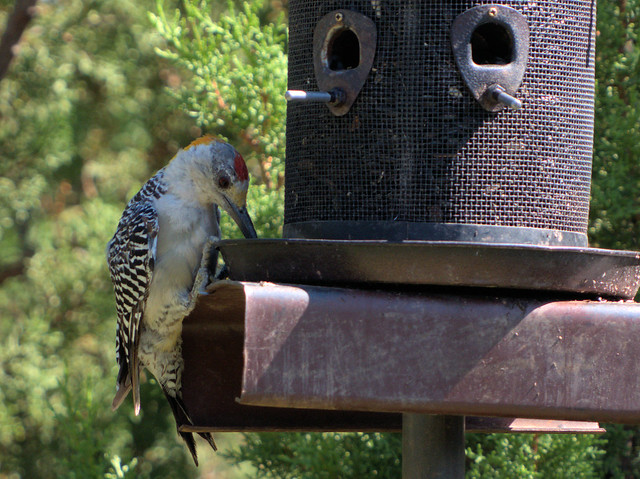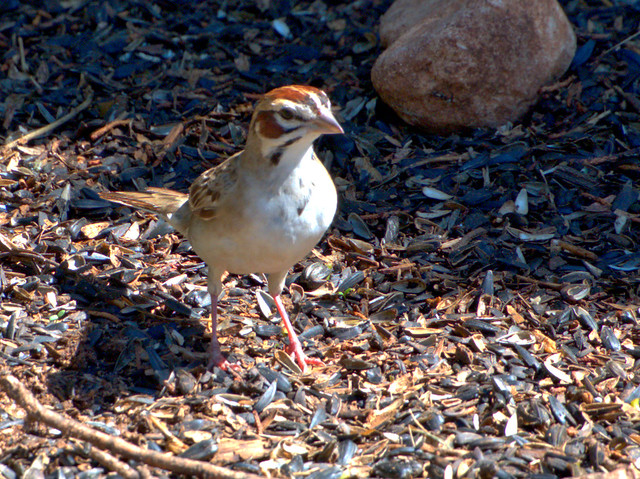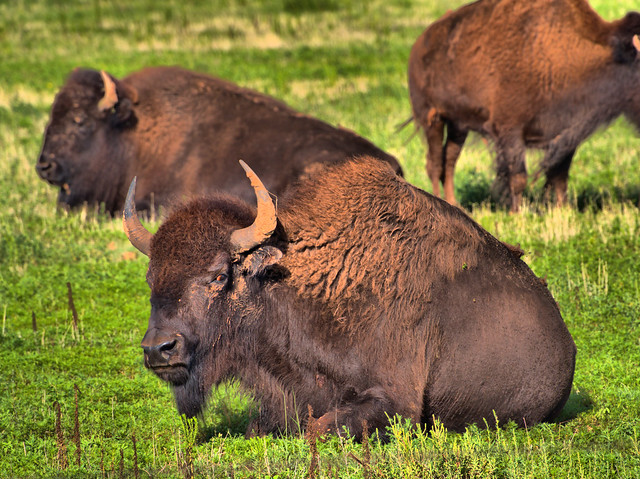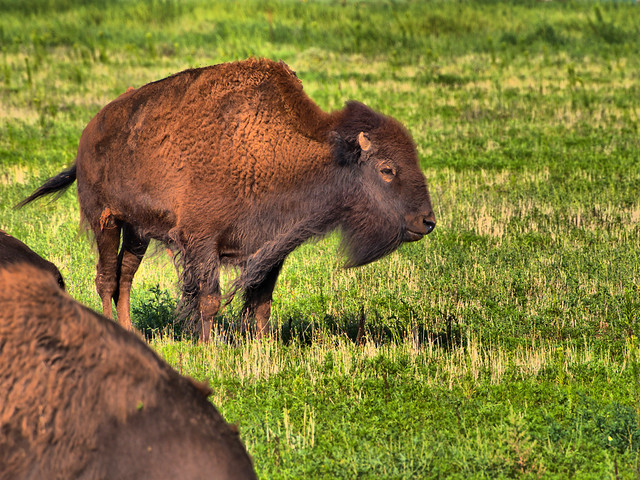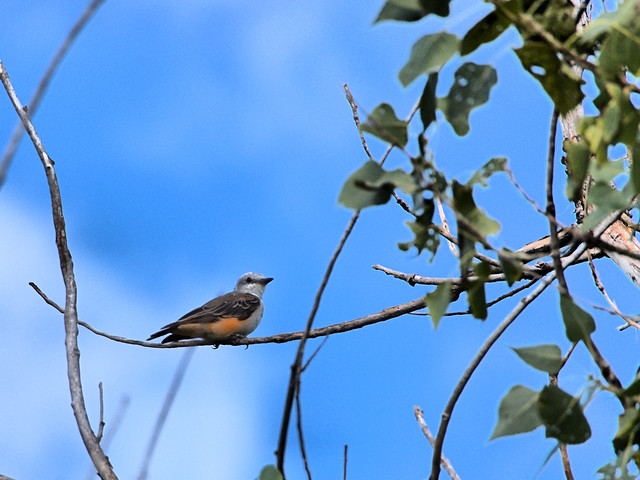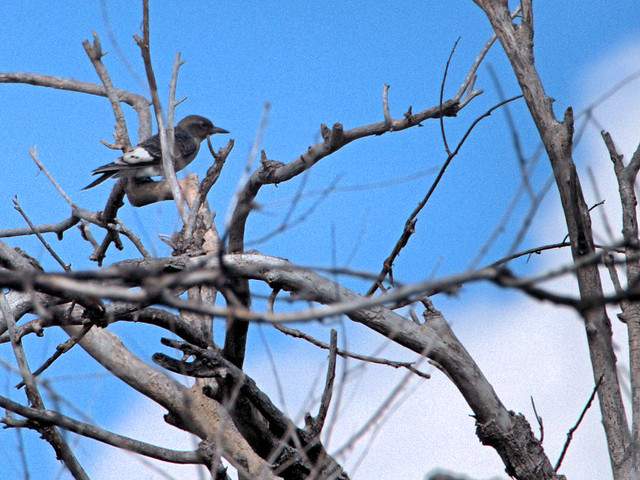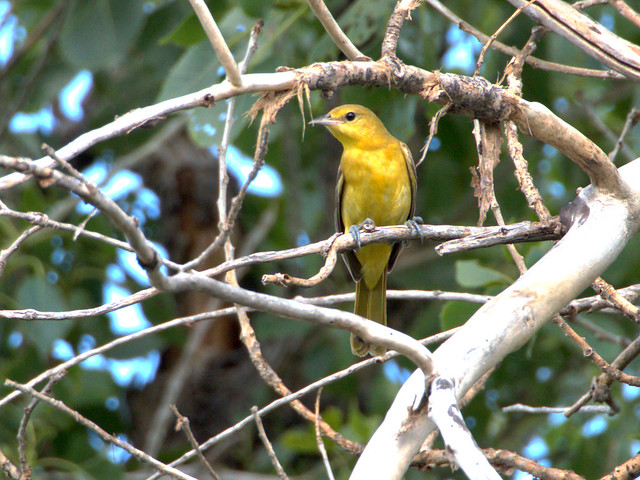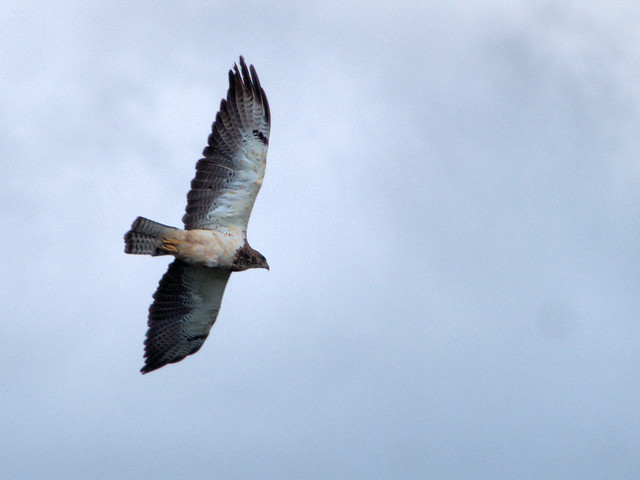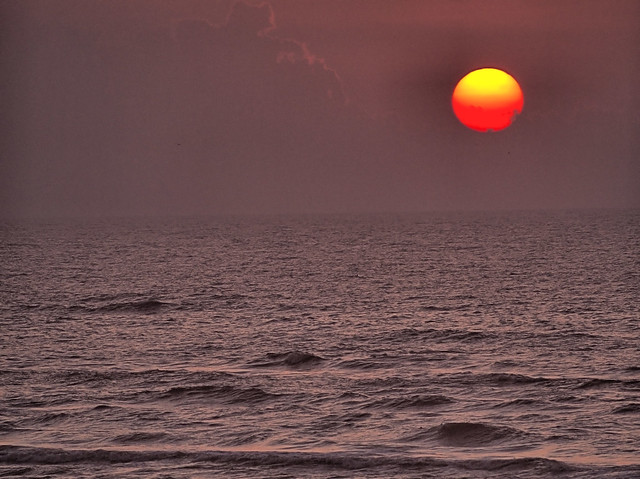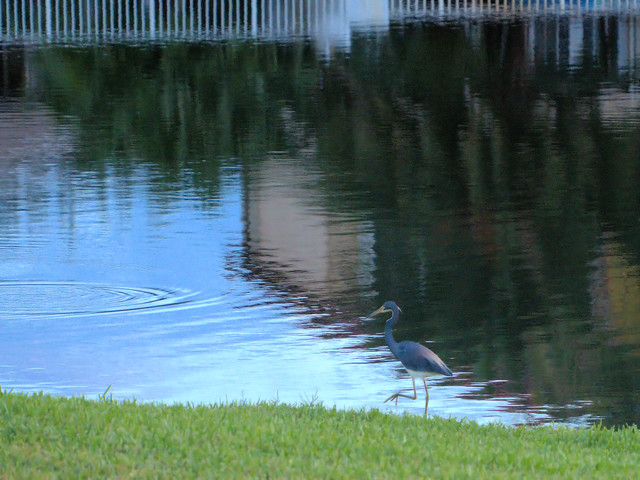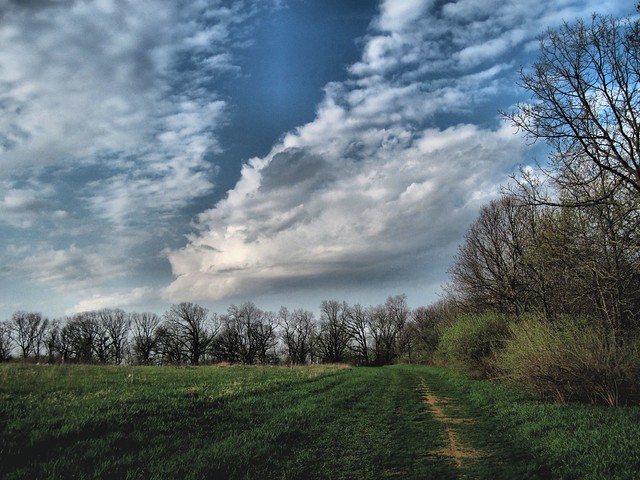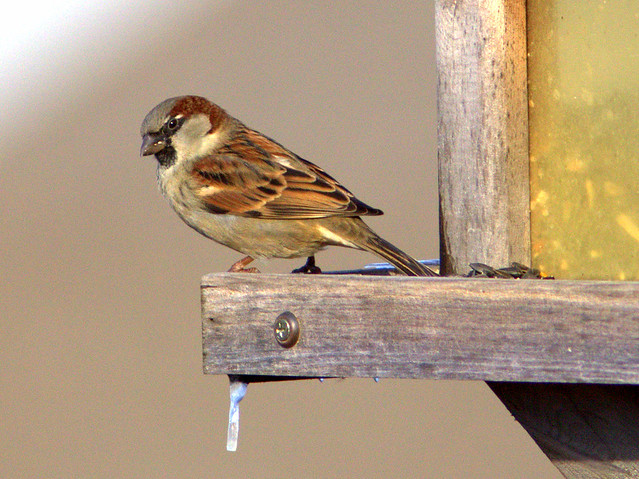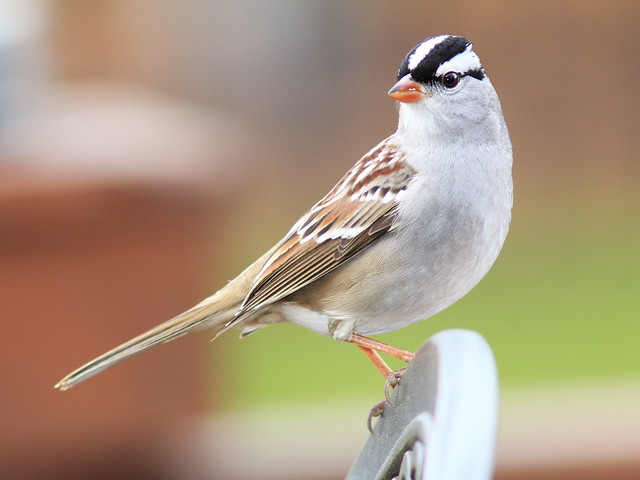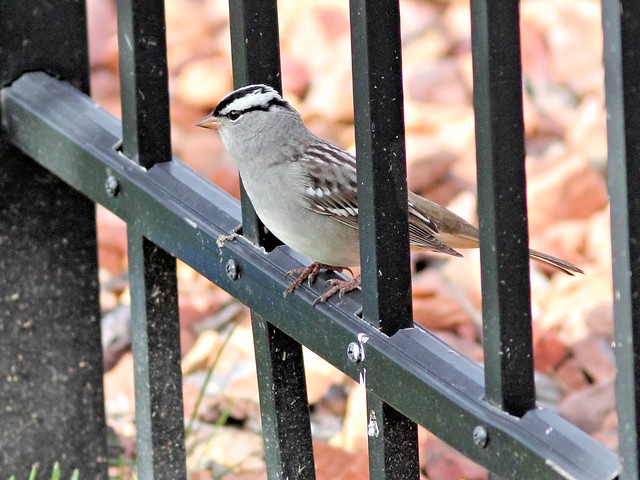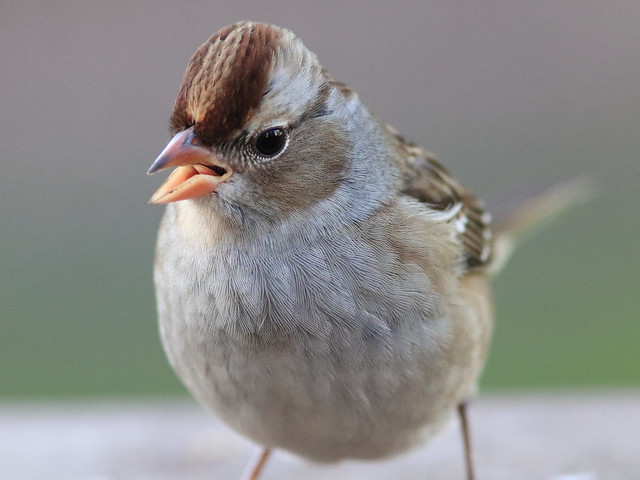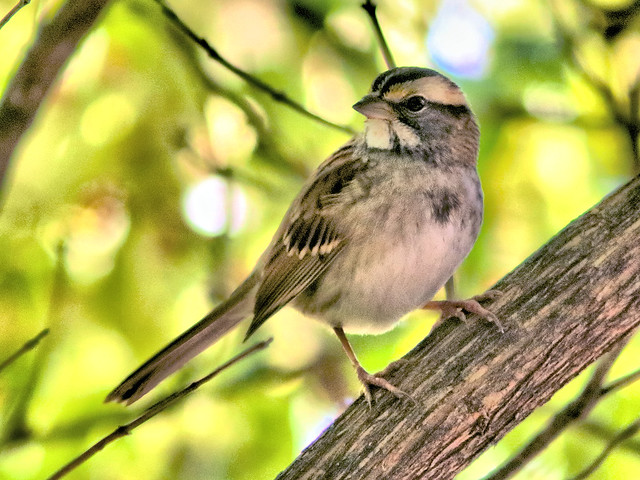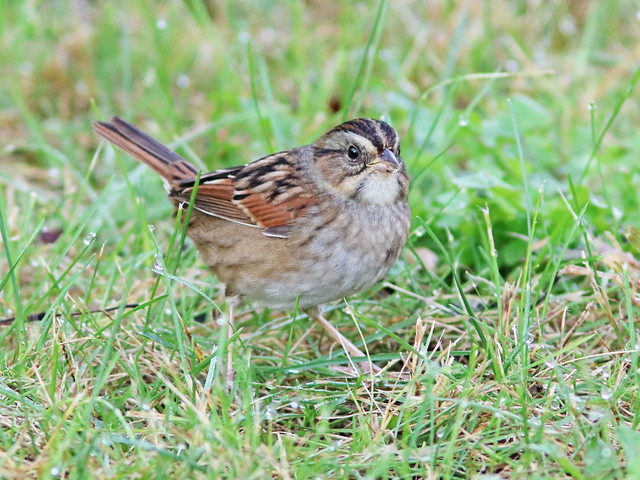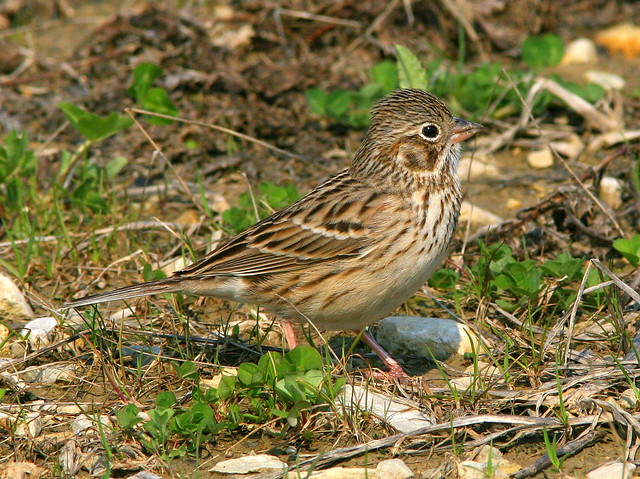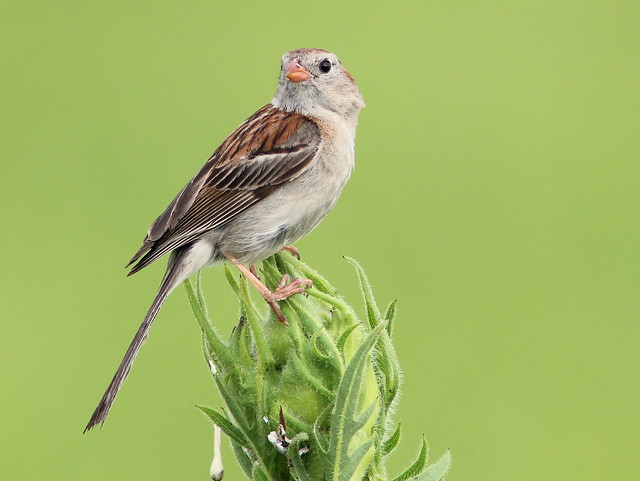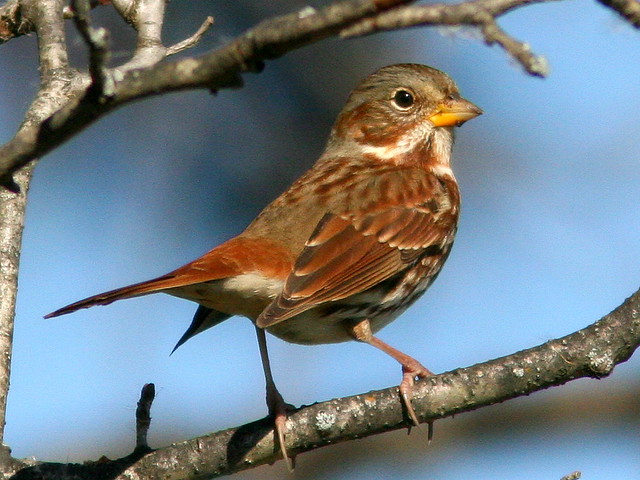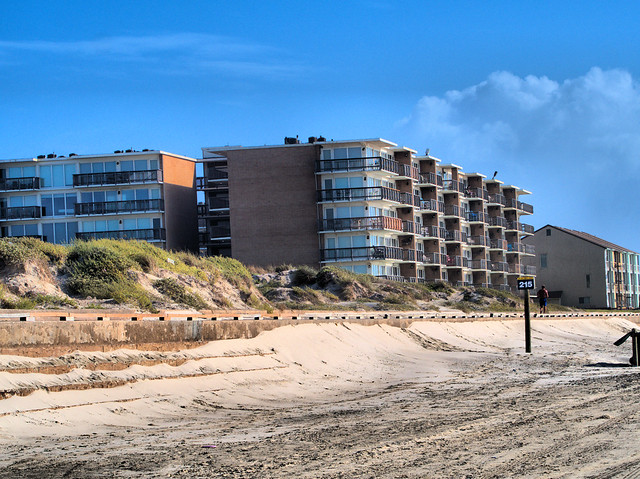
These are views which greeted us at sunrise:
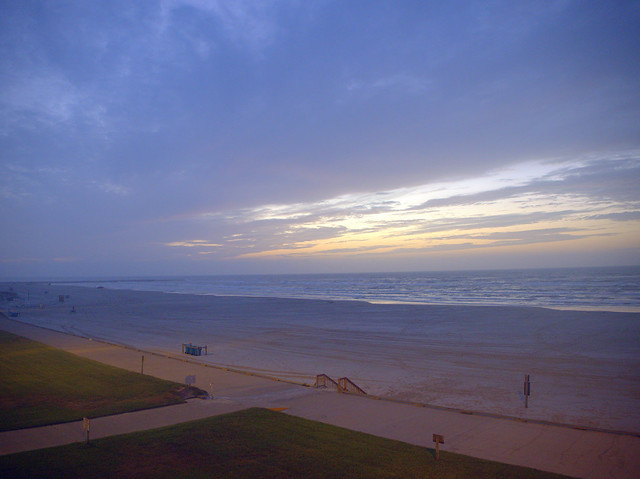
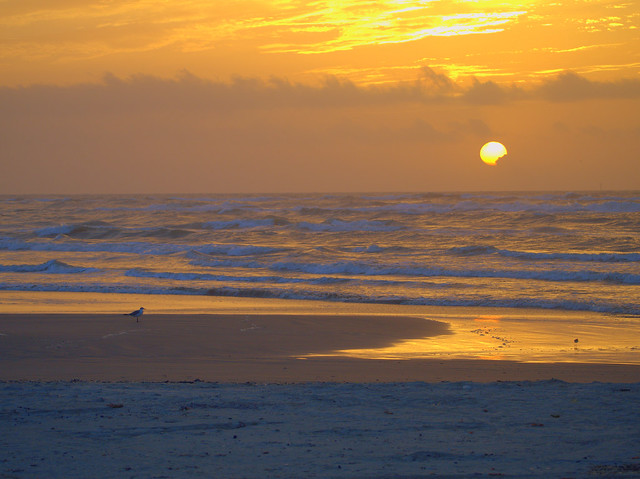
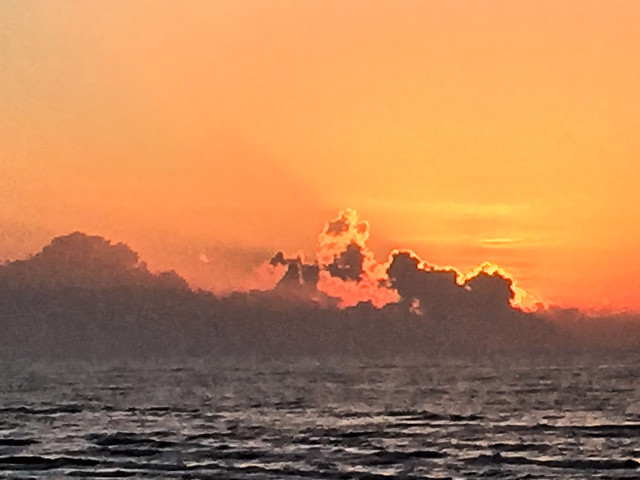
Mary Lou and I walked the beach early each morning. Our companions along the way were friendly humans...
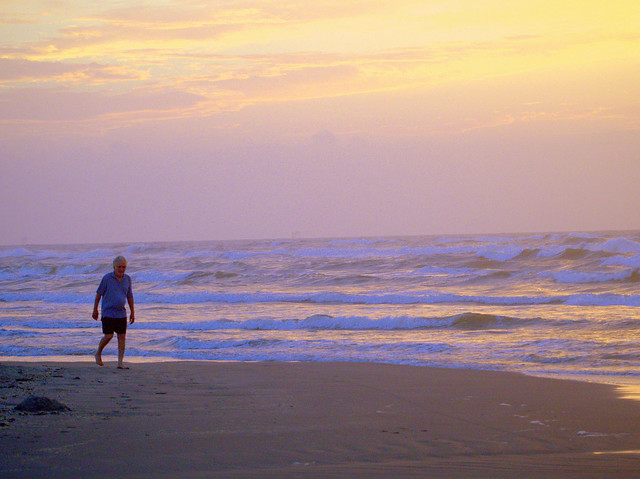
...and a few feathered critters. Sanderlings scurried back and forth as the surf rolled in and receded:
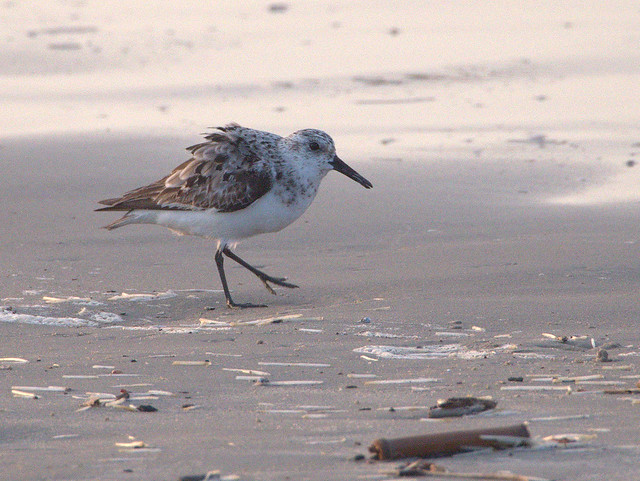
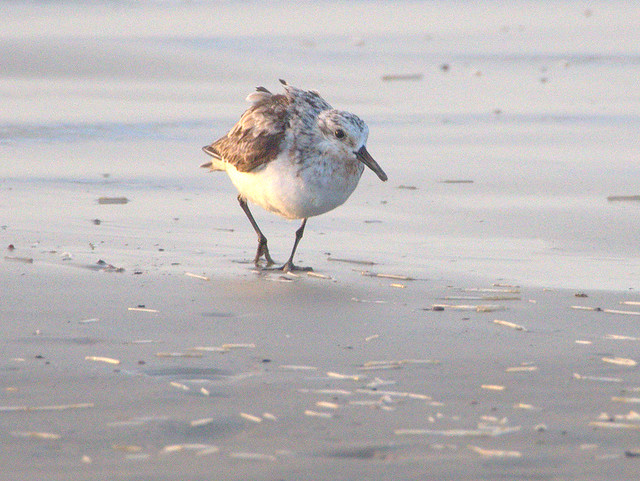
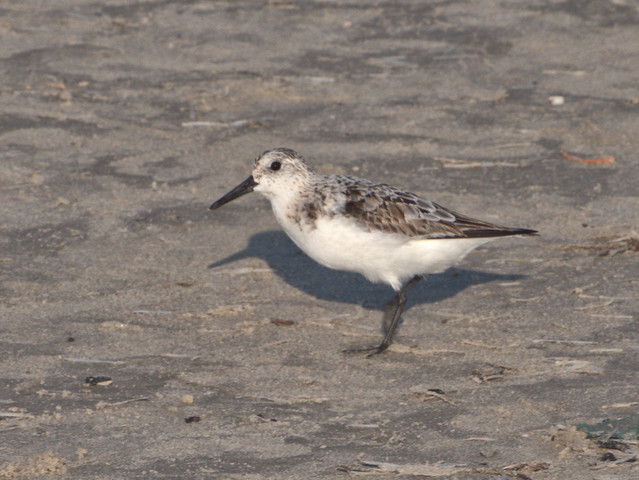
Laughing Gulls were numerous. They exchange their black heads for "earmuffs" at the end of breeding season:

This adult Herring Gull has a yellow bill and develops a few dark head streaks as winter approaches.
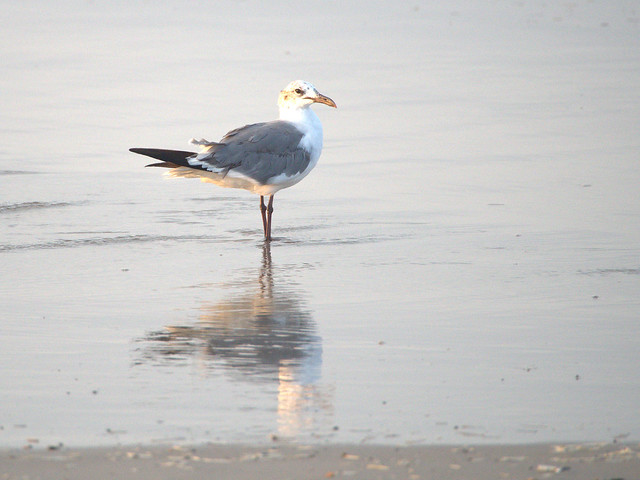
A Royal Tern flew overhead:
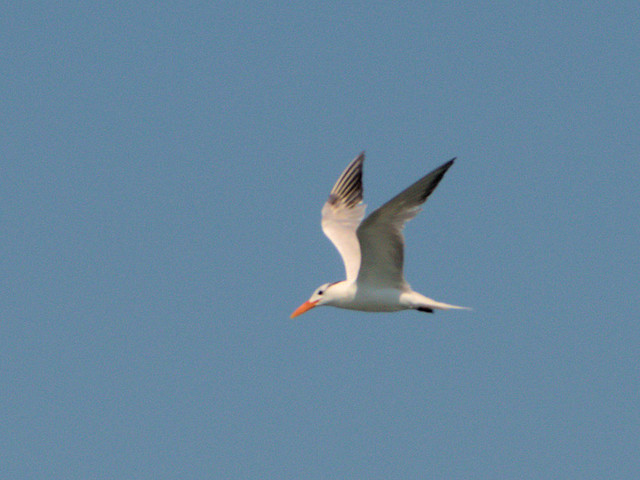
The Willet is a large sandpiper with a substantial straight bill. It flashes white wing patches in flight and loudly calls out its name:
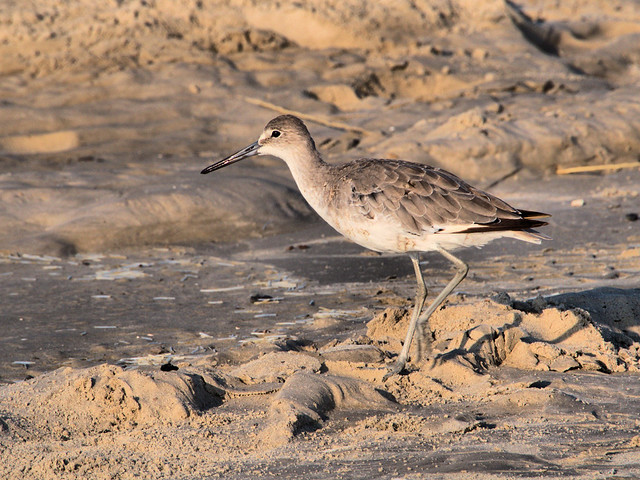
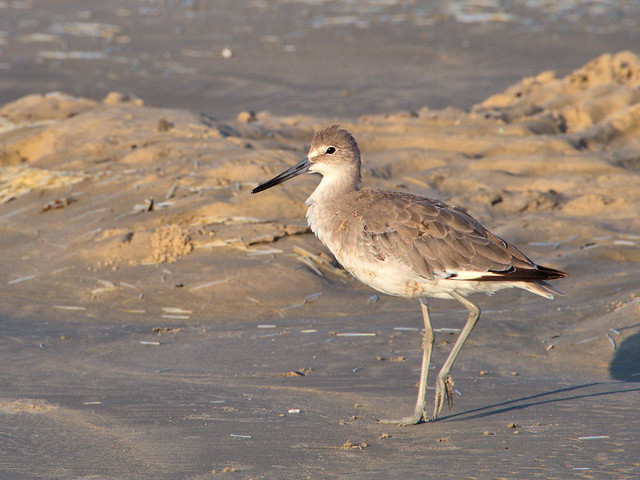
Ruddy Turnstones were quite numerous:
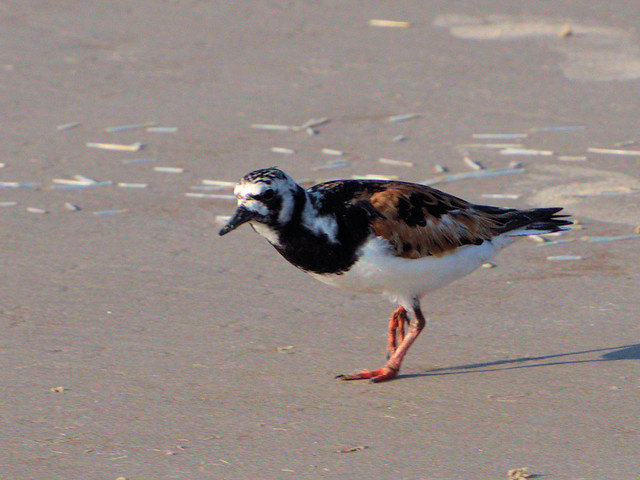
A special treat was this tiny Piping Plover, a threatened species (and endangered in the Great Lakes area) with a yellow-orange flag and a blue-green band respectively on its left and right upper legs. The colors indicate it came from the northern Great Plains states. The light was poor and I could not read the number on the flag, and it flew off before I could draw nearer:
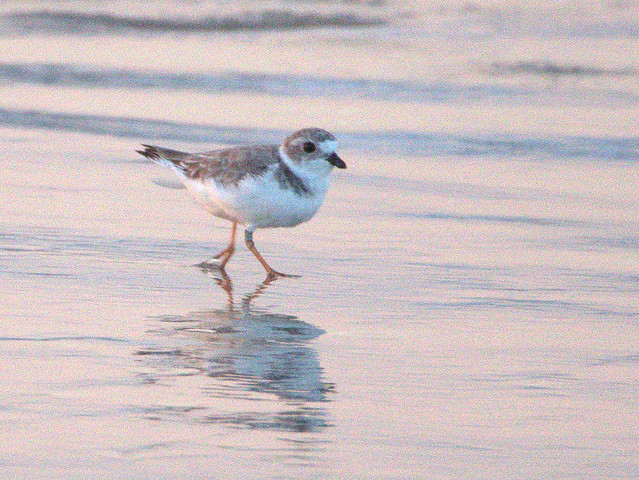
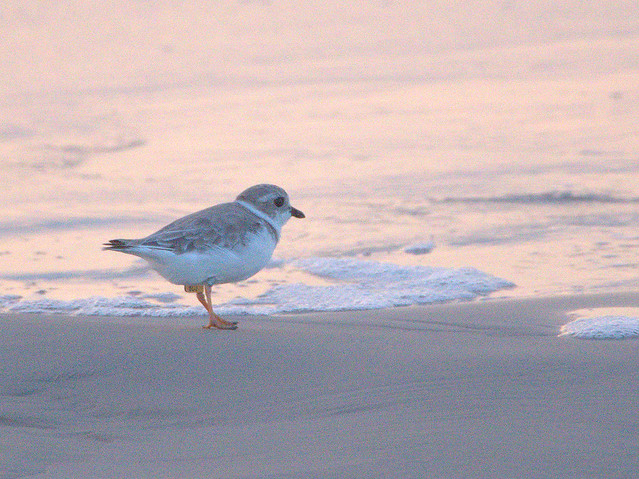
The younger family members went fishing from a pier at night, and I joined them. I tried out the low-light performance of my new mirrorless camera. These images were hand-held and brightened in post-processing but no filters were applied:
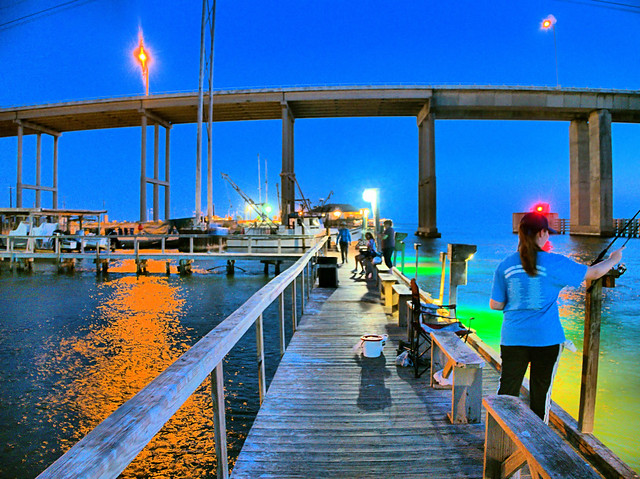

I assume that the green lights under the pier are intended to attract fish:
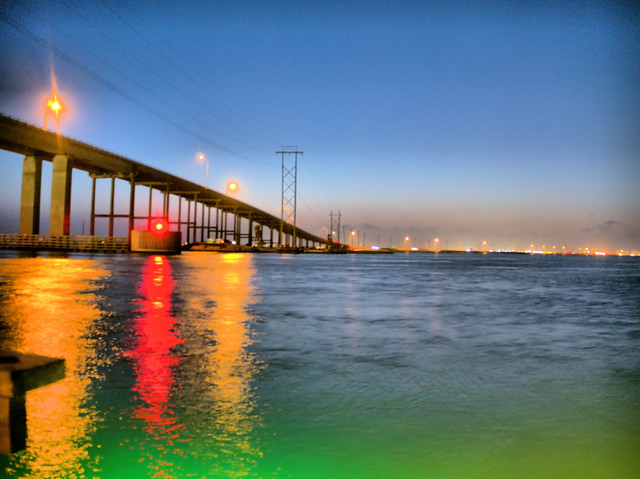
At Port Aransas, we took a successful dolphin-watching boat tour, but I got no decent photos because of my poor reflexes and the annoying shutter lag with my new camera.
This is a view of the harbor over the "fence" on the stern of the boat. I did not realize how drastically this scene would change only a few days later:
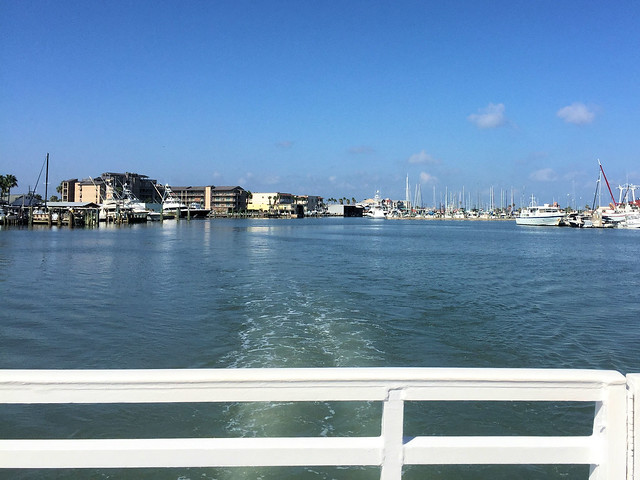
The boat captain pointed out a flock of Roseate Spoonbills, which he called "Texas Flamingos:"
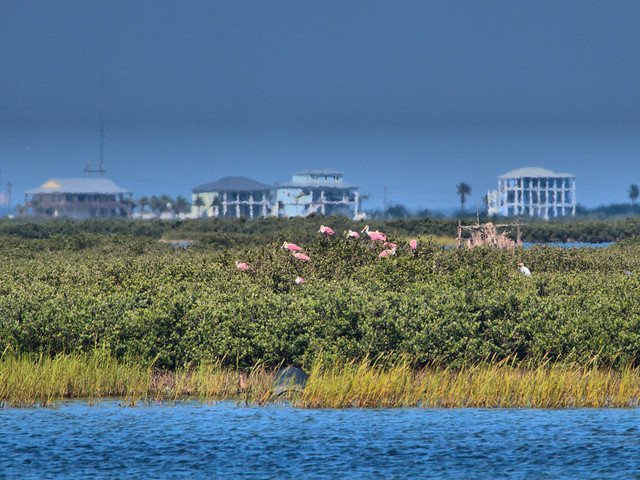
The Lydia Ann Lighthouse, placed into service in 1857, guards the passage between the Gulf and the bay. Hurricanes destroyed the outbuildings several times, the worst in 1916 and 1919. It was deactivated in 1952 and is now under private ownership. The light was restored and returned to service in 1988 as a private aid to navigation:

On my 82nd birthday, just a week after I took these photos, the eye of Hurricane Harvey had already passed directly over Port Aransas and was then producing massive devastation in Houston, Texas. My birthday occurs at the height of hurricane season. In recent years, four Atlantic and Gulf hurricanes made landfall on August 29: Katrina (2005) Gustav (2008) and Isaac (2012).
At this point I have not heard how the lighthouse fared. I was reminded of how I spent my birthday when we lived New Orleans in 1969. I was in a school which served as a hurricane shelter, providing medical care to hundreds of evacuees after Camille struck on August 17. At that time it was the worst hurricane to ever strike the US mainland. See: Remembering Hurricane Camille
An excerpt: Remarkably, these words were written in 1999: “For many, Camille is a distant memory, an historical footnote from a time long gone. But Camille is also a harbinger of disasters to come. Another storm of Camille’s intensity will strike the United States, the only question is when. When this future storm strikes, it will make landfall over conditions drastically different from those in 1969. The hurricane-prone regions of the United States have developed dramatically as people have moved to the coast and the nation’s wealth has grown. Estimates of potential losses from a single hurricane approach $100 billion.”
[Thirty Years After Hurricane Camille: Lessons Learned, Lessons Lost, by Roger A. Pielke, Jr., Chantal Simonpietri, and Jennifer Oxelson ,12 July 1999]
= = = = = = = = = = = = = = =
Linking to Misty's CAMERA CRITTERS,
Linking to Eileen's SATURDAY'S CRITTERS,
Linking to FENCES AROUND THE WORLD by Gosia
Linking to WEEKEND REFLECTIONS by James
Linking to BirdD'Pot by Anni
Linking to Wild Bird Wednesday by Stewart
Linking to Wordless Wednesday (on Tuesday) by NC Sue
Linking to ALL SEASONS by Jesh
________________________________________________
Please visit the links to all these memes to see some excellent photos on display
________________________________________________
